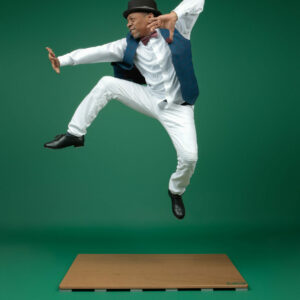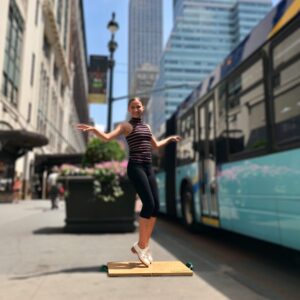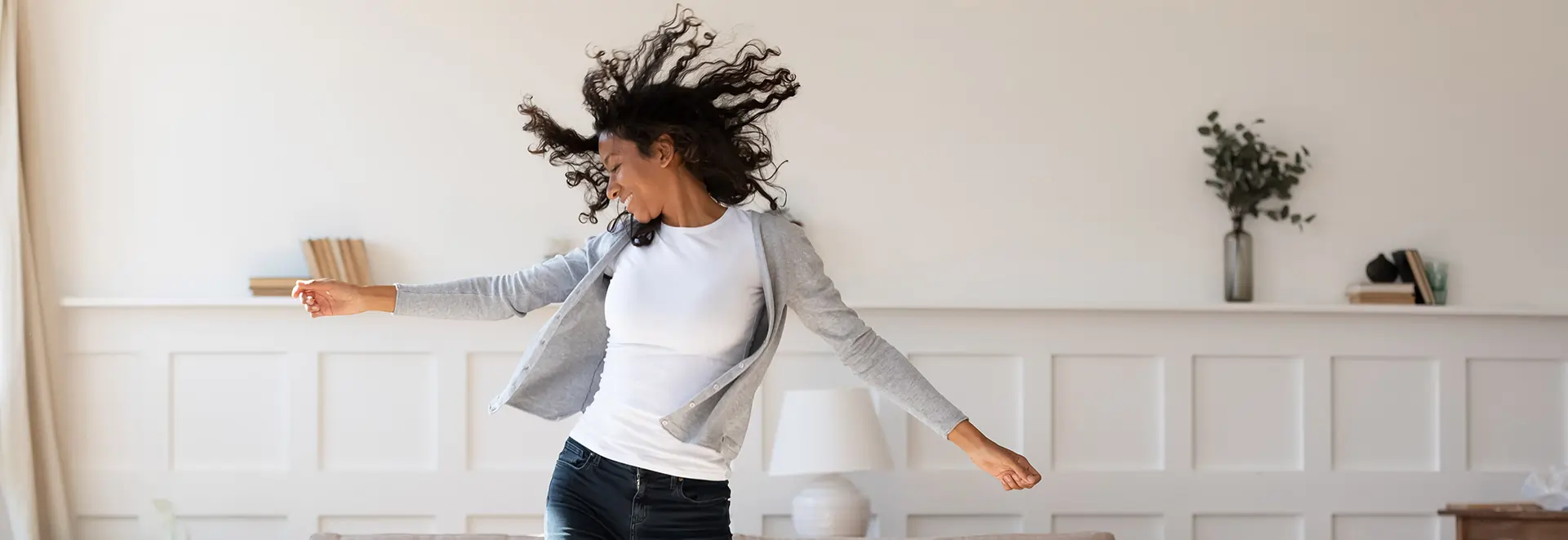If you dance professionally or as a hobby, a home dance studio may be the perfect thing to hone your craft. That said, you need to choose a studio floor before you can start dancing. The best flooring for a home dance studio will vary based on the type of dance you want to do and the overall sense of space you want to establish. With that in mind, you’ll want to shop for available materials with an eye for your personal needs.
Building a Home Dance Studio: Things to Consider
When you first bring your at-home dance studio together, you’ll want your space to marry your preferred dance style with your safety needs. In addition to being sprung, your flooring of choice needs to be slip-resistant while also allowing for your preferred maneuverability. For example, ballet dancers who spend a significant amount of time on pointe benefit from floors that support their joints while offering them a sense of stability and security. On the other hand, tap dancers benefit from working on floors that combine durability with acoustics. If you’re doing a significant amount of contemporary work, you’ll want a floor that is both smooth on your bare feet, and forgiving as you leap, bend, and experiment with floor work.
Available Flooring
When it comes to choosing the best flooring for a home dance studio, you have a lot of options. Some of the best flooring options for home dance studios include :
Laminate Flooring
Many people look to laminate flooring because this material tends to come in a wide variety of forms, meaning that you can match it to your paint, walls, and other studio accessories with ease. It gives the look of wood at a cheaper price point than hardwood. Installed properly, with a sprung subfloor underneath for safety, laminate flooring can provide a surface that easily matches the rest of your home or studio. However, laminate surfaces are more slippery than is safe for most styles of dance. This surface would be okay only for contemporary dancers who are dancing in bare feet, which gives them lots of grip and stability.
Hardwood Flooring
When you imagine a home dance studio, you may first imagine hardwood floors. Hardwood floors tend to be your most expensive installation option, but they’re popular with homeowners who are looking to precisely match the look of the rest of the flooring in their home. Hardwood flooring also tends to withstand significant wear and tear with ease, making it ideal for all forms of dance from ballet to tap.
You will need to do some preliminary work if you want your hardwood floors to suit your studio. First you will need to install the sprung subfloor which is necessary for a safe dance practice space. After your sprung subfloor is installed you will need to have a professional install and finish your hardwood dance surface.
However, there are some dance floors that give you the quality of hardwood, with the versatility of a subfloor and finish floor in one. They may not match your house perfectly, but they will give you the beauty and durability you want. Some of the best all-in-one hardwood floors for at-home dance studios include:
- ProLine Maple
- Soft Shoe Ash
Vinyl Flooring
soft vinyl floors that are rolled out and taped down are both common and suitable for at-home dance studios. However, like hardwood dance floors, it is very important that your vinyl dance floor surface has a sprung subfloor. Vinyl dance floor surfaces are excellent for ballet and contemporary dance. Because they dampen sound, tap acoustics are not as crisp, but they can be very nice for tap dancers who prefer a quieter sound in the home. Like hardwood dance floors, vinyl floors tend to be more complex to install than a dance floor which is both a sprung subfloor and finish floor in one
Plywood Flooring
Most dance floors are made with plywood, however what most people do not know is that there are many different types of plywood. There are also plywood-like manufactured wood boards which are sometimes confused with plywood. The quality of plywood board can vary considerably and the type you choose has everything to do with how resilient and durable your floor will be.
There are so many types of manufactured wood boards that we will go into only a few here. Several types of board that are commonly called plywood but are not include oriented strand board (typically referred to as OSB), particle board, and medium-density fiberboard (usually called MDF). All of these are made with varying sizes of wood chips or dust which are mixed with adhesive and compressed to make a solid panel. These compressed wood products are less resilient and less durable than plywood.
Plywood is made with very thin sheets of wood, called veneers, which are glued together in layers. In each layer, the grain is run in alternated directions to make a more stable board. Plywood can vary in number of layers, quality of veneer, and type of wood. The most high-quality plywood is utilized in interior architectural and marine applications. This high-grade cannot be purchased from your local hardware store.
The highest quality plywood dance floors you can buy are both a subfloor and finish floor in one. These include:
- ProLine Maple
- Soft Shoe Ash
- Finished Birch
These dance floors are made with a proprietary solid-core 3/4” 9-ply plywood with an ultra-durable ceramic-based urethane finish. The Birch is Baltic and the Ash and Maple wood comes from North American suppliers who use sustainable forest harvesting practices. The glues and urethane are low in VOCs. Another option is a Raw Birch Sprung Subfloor, on which you can install the finish surface of your choice.
Semi-Permanent Flooring Versus Portable Dance Studio Flooring
The home dance studio flooring that you can choose from doesn’t just vary in terms of make. It can also vary in permanency. Some materials need to be installed on a permanent basis, while some can be moved from home to home, and others can travel with you if you go on tour. Portable dance studio flooring, comes in a range of size configurations.. If you are looking for your portable dance studio floor for your home so that you can move the dance floor when you move homes, you can choose nearly any size floor. A portable dance floor can range in size from 6’ x 8’ to a full room custom-fit dance floor. Truly portable dance floors tend to be on the smaller side size-wise, but the great thing about a portable dance floor is its maneuverability. If you need to warm up your muscles while in hotel rooms around the world, you can bring these floors with you.
Installation and Expected Costs
While you can make dance studio flooring on your own, it’s easiest to have professionals helping you out. As you’re shopping for the best at-home dance studio flooring, you can request cost estimates and flooring recommendations based on the size of your allotted space. And remember if having a portable dance studio floor is important to you, be sure to specify where and how often you may want to move your home dance studio floor. From there, experts in the field can work with you to ensure that you have both enough of your flooring at the proper size, and the right tools on hand for a successful installation.
Start Planning Your At-Home Dance Studio Today
Dancing is as much about your form and experience as it is about the setting you’re working in. When you build an at-home dance studio, your floor needs to be both practical and safe to use. If you’d like to see what professional options are available, visit our Home Dance Studio Floors page, or see how easy it is to install your home studio flooring with O’Mara.







